Indigo Books
Learn to Speak Czech
About Czech
A member, with *Slovak, *Polish and *Sorbian, of the western subgroup of the *Slavonic languages. It can be spoken preeminently while in the Czech Republic where it runs on the status of official language.
Keywords: Czech-English and English-Czech Dicitonary
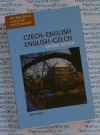
Czech-English and English-Czech Dictionary Revised Edition Other Learn to Speak Czech Audio and Books click here Czech-English and English-Czech Dictionary - Paperback Paperback - 593pp Over 7500 entries Includes a phonetic guide to pronounciation in both languages A glossary of Czech menu terms Perfect for students and travelers Completely modern and up-to-date About the Czech Language Czech is one of the West Slavic languages along with Slovak Polish Pomeranian (Kashubian) and Lusatian Sorbian. It is spoken by most people in the Czech Republic and by Czechs all over the world (about 12 million native speakers in total). Czech is relatively close to Slovak and to a lesser degree to Polish or to Sorbian in East Germany. Because of official Czechoslovakian government policies of broadcasting in Czech and Slovak for several decades the generations born until the mid 1970s can understand both languages very well. Later generations progressively understand each other less. Children who learned Czech or Slovak after the 1993 split have more problems understanding the
Keywords: Pimsleur Comprehensive Czech Level 1 - Discount - Audio 16 CD
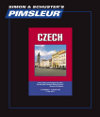
Pimsleur Comprehensive Czech Level 1 Get other Czech Language audio click here Comprehensive Czech I includes 30 lessons of essential grammar and vocabulary -- 16 hours of real-life spoken practice sessions -- plus an introduction to reading. Upon completion of this Level I program you will have functional spoken proficiency with the most-frequently-used vocabulary and grammatical structures. You will be able to: * initiate and maintain face-to-face conversations * deal with every day situations -- ask for information directions and give basic information about yourself and family * communicate basic information on informal topics and participate in casual conversations * avoid basic cultural errors and handle minimum courtesy and travel requirements * satisfy personal needs and limited social demands * establish rapport with strangers in foreign countries * begin reading and sounding out items with native-like pronunciation. About the Czech Language Czech is
Keywords: Teach Yourself Complete Czech - Language 2 Audio CD's and Book -Discount - Learn to Speak Czech
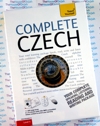
Teach Yourself Complete Czech Book and 2 Audio CDs Get other Czech Language Learning Audio CD click here Teach Yourself Complete Czech- 2 Audio CDs and Book Brand New: 2 Cds and 368 page Book Are you looking for a complete course in Czech which takes you effortlessly from beginner to confident speaker? Whether you are starting from scratch or are just out of practice Complete Czech will guarantee success! Now fully updated to make your language learning experience fun and interactive. You can still rely on the benefits of a top language teacher and our years of teaching experience but now with added learning features within the course and online. The course is structured in thematic units and
Keywords: Pimsleur Basic Czech Language 5 AUDIO CD s -Discount - Learn to Speak Czech

Pimsleur Basic Czech Totally Audio - only 30 minutes a day 5 CDs Pimsleur Basic Czech - 5 Audio CD The Pimsleur Method provides the most effective language-learning program ever developed. The Pimsleur Method gives you quick command of Czech structure without tedious drills. Learning to speak Czech can actually be enjoyable and rewarding. The key reason most people struggle with new languages is that they aren t given proper instruction only bits and pieces of a language. Other language programs sell only pieces - dictionaries; grammar books and instructions; lists of hundreds or thousands of words and definitions; audios containing useless drills. They leave it to you to assemble these pieces as you try to speak. Pimsleur enables you to spend your time learning to speak the language rather than just studying its parts. When you were learning English could you speak before you knew how to conjugate ve
Keywords: Czech Phrasebook - Lonely Planet
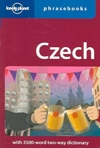
Lonely Planet Czech Phrasebook Two-way dictionary and Phrasebook Other Learn to Speak Czech Audio and Books click here Lonely Planet Czech Phrasebook - Paperback Paperback - 254pp More essential than socks (and lighter on your nose) this phrasebook is your card to the real Czech adventure--from monumental Moravia to classic countryside and Pilsner in Prague relax and take a moment to raise your glass. Na Zdravi! (Cheers!) About the Czech Language Czech is one of the West Slavic languages along with Slovak Polish Pomeranian (Kashubian) and Lusatian Sorbian. It is spoken by most people in the Czech Republic and by Czechs all over the world (about 12 million native speakers in total). Czech is relatively close to Slovak and to a lesser degree to Polish or to Sorbian in East Germany. B
Keywords: Pimsleur Basic Czech Language 5 AUDIO CD s -Discount - Learn to Speak Czech
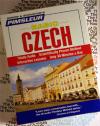
Pimsleur Basic Czech Totally Audio - just 30 minutes a day 5 CDs Get additional Czech Language Learning Audio CD click here Pimsleur Basic Czech - 5 Audio CD Brand New : 5 CDs The Pimsleur Method delivers the best language-learning system ever developed. The Pimsleur Method provides you rapid control of Czech structure without boring drills. Understanding to speak Czech may really be enjoyable and worthwhile. The key reason many individuals battle with fresh languages is that they aren t provided right training just pieces and pieces of the code. Other code programs market just pieces - dictionaries; grammar books and instructions; lists of hundreds or thousands of words and definitions; audios containing useless drills. They leave it to you to assemble these pieces as you try to speak. Pimsleur allows you to invest your time understanding to speak the code instead of merely studying its
More about Czech
Earliest attestations
The earliest attestations, available isolated words (often names), glosses and insertions in Latin manuscripts, date from the 10th -century Longer consecutive texts appear from the mid-13th -century, with one isolated complete sentence from the early 13th -century, in addition to the Latin deed founding the Leitmeritz (Litomefice) chapter in 1057. The maturity of early Czech is ascribed to some extent to the indirect effect belonging to the use of *Church Slavonic as the first literary language officially used on Czech soil. The oldest recorded literary work is a four-verse hymn, from the second half belonging to the 13th -century, already a part of a Latin codex. The text of the company's opening verse (version A below) may serve not just in illustrate the orthography of the period but also, through its transcription according to modern orthographic conventions (B) and a modern rendering (C) to show how little (in a few respects) Czech has changed over the centuries:
A. [Z]louo do zveta ztworene / v boftui zhowano, / ief pro Euino zreffenie / na zuet pozlano.
B. Slovo do sveta stvoi'enie / v bozstvi schovcino, / jeZ" pro Evino shieS' enie / na svet posMno.
-century Slovo do sveta stvol'eni / [bylo] v bostvi schovcino, / jd pro Evino shiVi eni / [bylo] na sve poskino.
Translation: 'Prior to the Creation of the world, from time to time / was concealed while in the Divinity, / (and) because of Eve's sinning / it was sent in order to the world.'
Czech as a literary language
The 'classical' period of Old Czech literature could be the 14th and 15th centuries, which produced a wealth of legends belonging to the saints, chivalrous verse (the Czech Alexandreid), chronicles (the Dalimif chronicle), vernacular, not saying ribald, religious plays (the Easter Mastiekcii; 'The Unguentarius'), code of conduct lyrics, religious and secular `fables' (such as the ones from the Hradec MS), the first work whose authorship may be known (Smil Flagka z Pardubic's Nova rada 'New Council', a kind of 'Parliament of the Animals'), legal texts (Ondi-ej z Dube's Prava zemsk4 eeskyi 'Law of the Land of Bohemia') and early translations of a few of the Gospels (all 14th -century), and, in the
Fig. 5 The Glagolitic and Old Church Slavonic Cyrillic alphabets.
15th -century, more chronicles (Kronika trojanskd 'Trojan Chronicle', -century1468, the first Czech printed book), major classics particularly works of the religious reformer Jan Hus (John Huss) and the theological and philosophical writings of Petr CheFeickSr, political pamphlets (the verse disputation Hdddni Prahy s Kutnou Horou 'Disputation of Prague with Kutna Hora'), early short stories ( Valter a Grizelda) as well as a great deal else besides. They are the beginnings of a long and continuous literary tradition of over 600 years. The more common Czech perception is that after 1620, when the Bohemian Estates were finally defeated by the Habsburgs at the Battle of the White Mountain (a hill just east of Prague), the language and literature went into decline. However, if more Protestant writing shifted eastward to the more hospitable (Upper) Hungary, there seemed to be still a way of measuring Catholic literature in Czech (Jesuit Czech'), and from morrison a pardon 18th -century the modern literature, gradually evolving further to all of genres, has gone from strength to strength. Literary works have, however, often held it's place in direct give an account to prevailing political conditions and relatively few writers have achieved lasting recognition abroad through translation, regardless of the relatively large body of translations in absolute terms.
The present day standard language
The language as currently codified is largely attributable to the linguists-philologists belonging to the National Revival. The first modern descriptive grammar, from which many later ones descend directly, is the fact that by Josef DobrovskST (1753-1829), Ausfiihrliches Lehrgebaude der Behmischen Sprache (Detailed System belonging to the Bohemian Language') (1809; 2nd revised edition 1819). (Dobrovskjr is otherwise remembered as the father of Slavonic studies.) Apart from having little faith while in the language's revivability (his grammar was written while in the German with which he himself was more at home), Dobrovskjr included in his revised standard many features that have been obsolescent or obsolete; that you had been present, however, in a few form or other, while in the 16th and 17th centuries, seen as the Golden Age that preceded the language's perceived decline (degeneration). The other important 19th--century name represents Josef Jungmann (1773-1847), remembered both for his Slovesnost (`Literature', 1820), in which he sought to demonstrate, theoretically and practically, partly through translations, that Czech could be used for any genre or style, and his awesome great five-volume Slovnik 1.eskonmeck)i (`CzechGerman Dictionary', 1835-9), essentially the only serviceable dictionary of Czech for an additional pair 120 years.
Of no small significance while in the external history of Czech is the emergence while in the 1920s of the Prague Linguistic Circle, which laid the foundations of one belonging to the major modern approaches to linguistic analysis and description (though not directed solely to Czech as such).
Orthography
The earliest, 'primitive', orthography was ill-suited to Czech, and was early replaced by versions of a system based on digraphs, however if you limited attempts to reflect, as an example, syllable length. The modern orthography uses the Latin alphabet with three diacritics: the hdi-ek 'hook' <'> (but N.B. lower case <d'>
and <t'> corresponding to capital <0> and <T>); the Barka 'stroke', like an acute accent, to denote a long syllable; and a krouZek 'circle' <>, which is used over long <u> in certain morphemically conditioned syllables. Credit for the introduction of diacritics, though not quite in the form used today, is accorded to the 14th-15th--century religious reformer Jan Hus. The spelling system in use from the 16th to the 19th centuries (used also in the first Czech 'grammar', published in Namege in 1533) differed from the current standard in the use of individual letters, their replacements being gradually introduced during the first half of the 19th -century, when <au> was replaced by <ou>; < 1> by <s>; < 11> by <g>; <g> by <j>; <g> by <g> (rare, since [g] is a non-native sound); <j> by <1>; <cy/sy/zy> by <ci/si/zi>. The orthography is broadly phonemic, but with two letters <i, y> for [i], distributed according to historical or etymological principles. The year 1994 saw the most recent proposal for a revision of the orthography, going beyond that proposed by the Institute for the Czech Language in Prague, to simplify the distribution of <y> and <i>, and also <s> and <z>. It is the function of that Institute (a department of the Czech Academy of Sciences) to offer guidance on all linguistic innovations, which it does largely through the journal Nase l'el. (`Our Language'), and to describe the evolving norm in usage, stylistics et-century through the pages of Slovo a slovesnost (`Word and Literature'), originally the organ of Prague Linguistic Circle, and monographic publications. Authoritative dictionaries have also usually been under the Academy imprint, but since 1989 some activities have been privatized, with many new, reputable, reference or encyclopedic publications now being issued by EncyklopedickY dfim.
Dialects
The Czech dialects divide broadly into (i) a Bohemian group, with not very striking dialects on the fringe surrounding Central Bohemian; and (ii) a variety of conspicuously distinct dialects in Moravia (Hann, Valasko, Slovicko); that of Slovkko while in the south-east is joined by a number of isoglosses to Slovak, those invoved with north of manchester, in southern (Moravian) Silesia, having various shared features with Polish. Essentially the most important (social) dialect will undoubtedly be that variously known as Common Czech or Common Colloquial Czech, which is set in essence the everyday spoken language as it has continued to evolve in Central Bohemia, Prague in particular, unrestrained by linguists. Between it along with the standard language hopes tension because of the 400-year gap between them; the grammarians belonging to the National Revival (early 19th -century), codifying the brand new standard language, had taken as their model the 'richer', 'purer', `undegraded' language belonging to the 16th -century The standard language has itself evolved, even absorbing (being 'allowed' to absorb) some more upwardly mobile features of Common Czech. There has been some local aspirations (1830s, 1860s, 1990s) to find out an alternative Moravian standard alongside the existing, theoretically Bohemian, standard, these types of have gained little support.
Contact with other languages
The Czechs have throughout time lived adjacent to, mingled with or been surrounded. by German-speaking populations; Prague as well as the second city, Brno, were largely German cities as much as the 19th -century This has left its mark on the language while in the shape of waves of loan-words for items brought in by the Germans, not every one of which have been obliterated by the bouts of purism that have occasionally intervened resistant to the natural processes of linguistic development through contact. Many Czech idioms and established metaphors are suffering from in parallel to German, as well as in the 19th -century in particular Czech showed a tendency that can put the verb in clause-final position. Common Czech shows a marked tendency to make use of an an excessive amount deictic pronouns in noun phrases, sometimes ascribed to unconscious imitation rooted back belonging to the German definite article. Isolated other signs and symptoms of German influence perhaps range from the occasional postpositioning of certain prepositions such as kvith or navzdory: Petrovi kvuli 'for Peter's sake', jemu navzdory 'despite him'.
During and after the National Revival, when terminologies were being actively created for Czech, much borrowing and adaptation from other Slavonic languages, especially Polish and Russian, helped to make available selected gaps; such borrowed items sat quite easily in the receiving language. Later lexical intrusions from other sources include a number of Sovietisms, transliterated or calqued, but now obsolete, and Anglicisms, most strongly in sport (early 20th -century) and computer technology and business (late 20th -century), often mediated via German. Czech has been hospitable to a predictable range of cultural items from French and/or Italian, along with a typical spread of internationalisms of Greek or Latin origin. Neighbouring Slovak, an official language of equal standing with Czech in former Czechoslovakia, has contributed relatively little, but a handful of lexical items are referred to as of Slovak origin. On the grammatical front the spread in a few styles of participial phrases replacing relative clauses is sometimes ascribed to the influence of Russian.
Geography and demography
Czech in Europe is almost confined to the Czech Republic (-century tens of millions of speakers), though, as being a survival from the once united Czechoslovakia, about half a million Czechs end up in Slovakia, through work, marriage, et-century Elsewhere, from waves of migration largely within the old Austrian Empire, scattered Czech communities can be found in Poland, Croatia, Austria and Ukraine (Volynia, from where many have returned to the Czech Republic since 1989); 19th--century Vienna was built with a sizeable Czech population, now largely assimilated. Further afield, you can get Czech immigrant populations in Texas, Nebraska, Iowa (19th--century economic migrants), Chicago, Toronto (largely 20th--century political migrants) and elsewhere, a lot easier diffuse immigrant groups throughout western Europe, the Americas and Australia. Belonging to the North American populations only a few seek actively to sustain the language, though with decreasing success. It is hard to assess just the number of native speakers of Czech you can get world-wide: probably not more than 11 to 12 million.
Official status
As the Czech Republic's official language, standard Czech as being a written language can be used during the entire legal, government and education systems; not many people adhere to all of the norms of the standard language in everyday discourse, in which they will use variously refined and locally varying versions of Common (Colloquial) Czech. Czech does not have a status as a major international language (different from its wide use because of this in medieval times, even as far away as Constantinople), but Slovak law permits utilizing Czech in defined circumstances (e.g. in the courts in which a defendant is Czech); this really is in recognition of the mutual intelligibility of the two languages along with the tradition of their equal status brand new memoir Czechoslovakia.
30 day challenge: <b>Learning Czech</b> » Michiel Was Here
30 day challenge: Learning Czech. I've been living in the Czech Republic for almost two months, and I haven't learned too many words. So I decided to add a new challenge; learn Czech for a hour every day. If I'm only learning 10 words a day ...
Apps for <b>learning Czech</b> | panglott
This last week or so I've been looking at and assessing notable apps for language learning (Czech). These are really awesome, probably the best way to study a language on your own—fun, engaging, and easy to get into.
Is Czech a hard language? Are Slavic languages hard?
No, you've read enough to know that learning Czech is hell. But it was Mark Twain who said: “Go to Heaven for the climate, Hell for the company.” And that's true; Czechs are generally a friendly folk, and you will certainly make some great new ...





